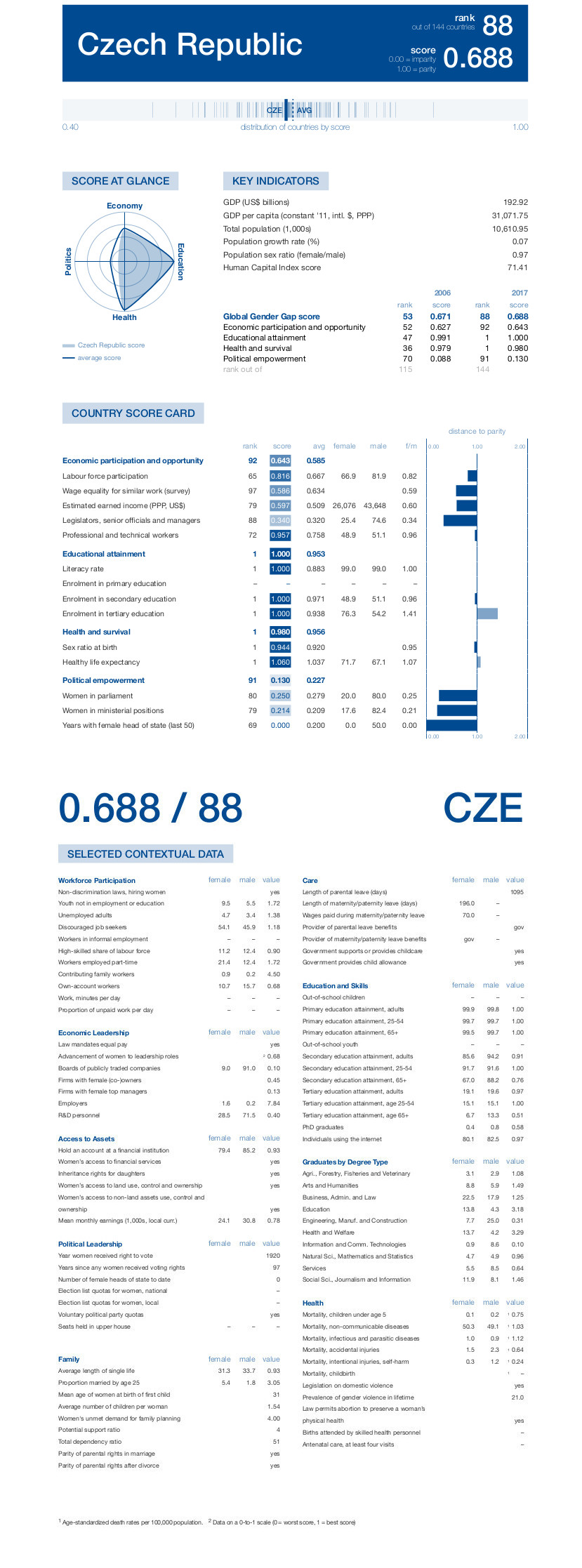The gender gap is currently closed at 68%. At the current pace, economic equality of the sexes will only be reached in 217 years time, namely in 2234 (in 2016 the expectation was 170 years).
These are the conclusions of last year's Global Gender Report 2017, which compared the status of men and women in 144 countries, including the Czech Republic.
Specifically, the study has measured gender differences in four basic areas every year from 2006:
- Economic participation and opportunities (salary, participation in sectors requiring high professional qualifications)
- Education (access to education from primary to tertiary)
- Political empowerment (representation in decision-making structures)
- Health and survival (life expectancy, proportion of men and women in the population)
The gender gap is narrowest in the field of health and survival, standing at 96%. Thirty-eight countries (the same as in 2016) have already reached full equality in this area. The gap in education stands at 95% (a slight decrease).
The shift towards equality in the key economic area, however, slowed significantly in 2016, which was the worst result since 2008. In 2017, there was a further decline of 1% to 58%.
The worst situation remains in the area of political empowerment where the gender gap is closed at only 23% (the same as in 2016). However, a long-term trend of slow improvement can be observed.
Global Gender Equality Index 2017 - Top 10 countries

No country has yet achieved 100% gender equality in all four areas being measured. The greatest equality between men and women remains in the Scandinavian countries. Iceland is number one (nine years in a row), followed by Norway and Finland.
Rwanda, which first entered the index in 2014 in seventh place, jumped from fifth in 2016 to fourth in 2017. Sweden fell from third to fifth place. The second five countries in the top ten are Nicaragua, Slovenia, Ireland, New Zealand and the Philippines. All these ten countries, albeit in a different order, were also in the top ten in 2016.
The biggest gender inequality remains in Yemen, Pakistan and Syria. The Czech Republic was ranked 88th in 2016 (it was in 77th place in 2016, 53th place in 2006).
The Czech Republic compared to other countries
Regarding economic participation and opportunities for both sexes, the Czech Republic ranks 92nd (89th place in 2016) and 91st in the field of political empowerment (85th place in 2016).
However, the Czechs are in first place in terms of access to education for both sexes and also in the category of health and survival. In both these areas, they have managed completely to eliminate gender differences, even though in the health and survival category they were in 40th place in 2016 (42nd place in 2015).
The complete study, including country-specific reports, is available for download at the World Economic Forum website.

-kk-


